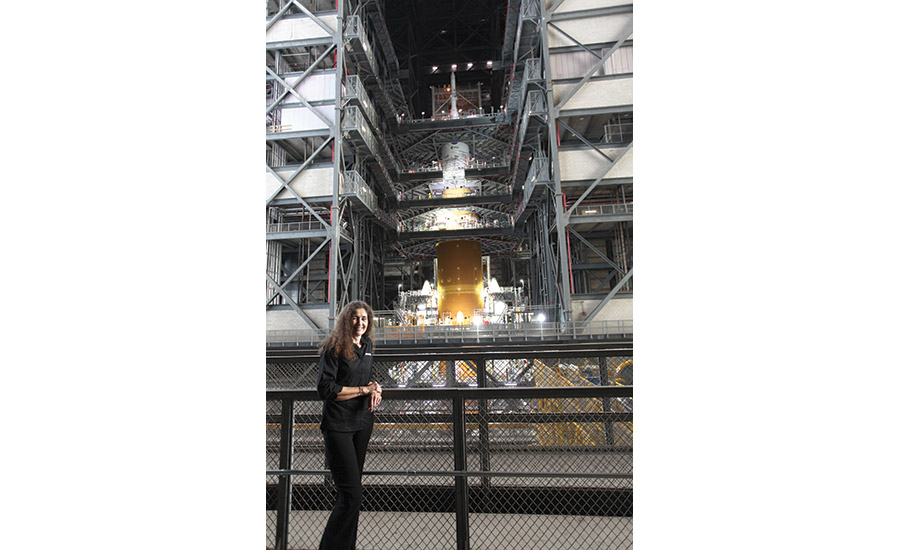Lorna Kenna’s day job is helping Americans return to the moon. As vice president and general manager of the Jacobs Space Operations Group at NASA’s Kennedy Space Center in Cape Canaveral, Fla., she leads the team working past logistical and COVID-19-related challenges to assemble the Artemis 1 rocket in the space agency’s vehicle assembly building for a scheduled launch in March.
Her responsibilities include everything from ensuring engineering performance of the rocket to how materials will react in space and testing of the systems that will connect all of the above.
Related Article:
NASA Moon Launch Early Next Year Takes Infrastructure Innovations
Back to:
25 Top Newsmakers
Kenna explains that the Jacobs team supports NASA’s exploration ground systems “in integration tests, checkout, and processing of the Artemis missions.”
That means working with manufacturers such as Boeing, logistics providers and the engineers doing the testing. “It is an honor,” she says, to represent the team with the “boots on the ground putting boots on the moon.”
When Artemis 1 launches in March it will use a new generation of space launch system rockets that will be NASA’s standard for the foreseeable future. In 2024, the program will send its first crewed lunar landing mission since Apollo 17 in 1972, including its first woman and first person of color.
Kenna’s work with NASA is part of Jacobs’ overall strategic plan to be a global solutions provider and branch out its services beyond the work of one of the largest engineering design firms in the nation. Kenna previously worked in asset management at Johnson Space Center and as Jacobs’ IT director at Cape Canaveral Air Force Station.
Helping assemble, integrate and test “the most powerful rocket ever built would be a daunting challenge even in the best of times,” says Brad McCain, deputy general manager for Jacobs at Kennedy Space Center. “I would say the NASA exploration ground services/test and operations support contract team has performed exceptionally well” in accomplishing this mission during a worldwide pandemic with the societal issues that have arisen, he adds. “Lorna helped us focus on our work scope but still manage to foster collaboration.”
Kenna says the overriding task has been both Jacobs and NASA’s concern for and management of the workforce, including communication and compliance with CDC guidelines.
NASA has not been immune to supply chain challenges, but the most difficult aspects of this project have been in the initial assembly and integration of the SLS/Orion spacecraft—the actual vehicle that will take astronauts from the rocket to the moon—and the extensive ground systems elements. But McCain said the team has worked through these issues and the logistical challenges as they have arisen.
McCain adds, “Lorna’s firm and steady leadership has helped to navigate these challenges … and we are very proud of how well our team has performed.”






Post a comment to this article
Report Abusive Comment